北师大版 选修七 Unit 19 Language Warm-up 教学课件 (31张ppt)
文档属性
| 名称 | 北师大版 选修七 Unit 19 Language Warm-up 教学课件 (31张ppt) | 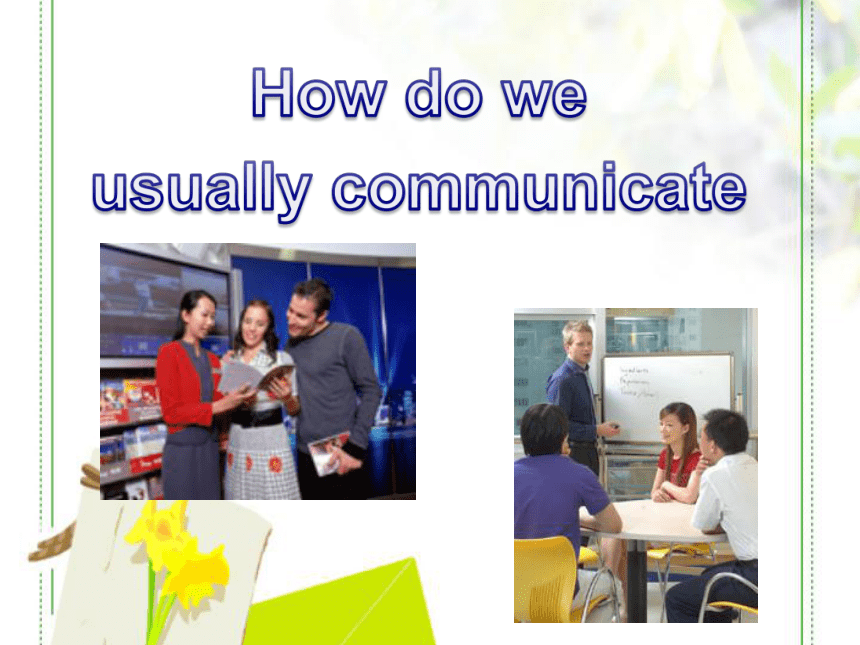 | |
| 格式 | zip | ||
| 文件大小 | 3.6MB | ||
| 资源类型 | 教案 | ||
| 版本资源 | 北师大版 | ||
| 科目 | 英语 | ||
| 更新时间 | 2016-04-18 20:34:57 | ||
图片预览

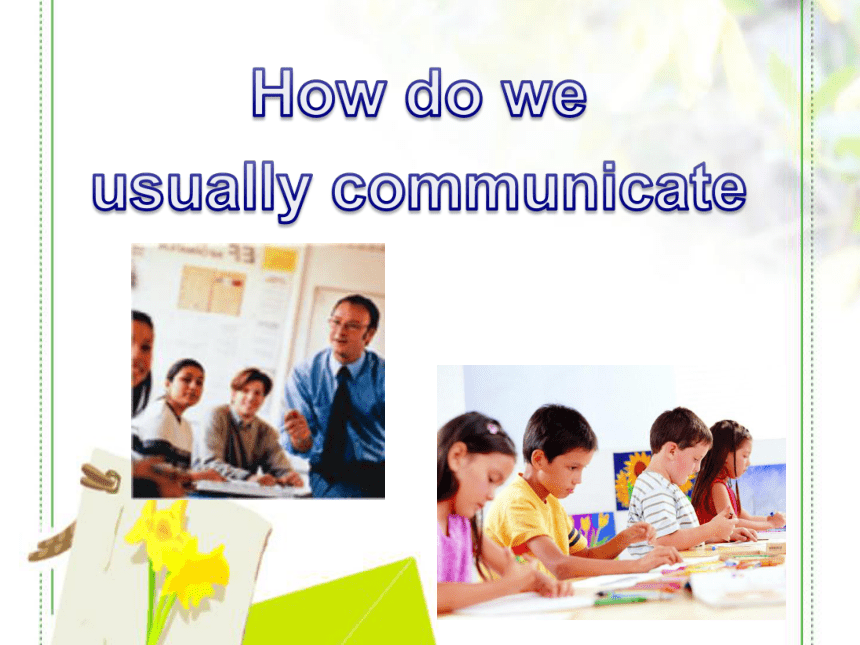

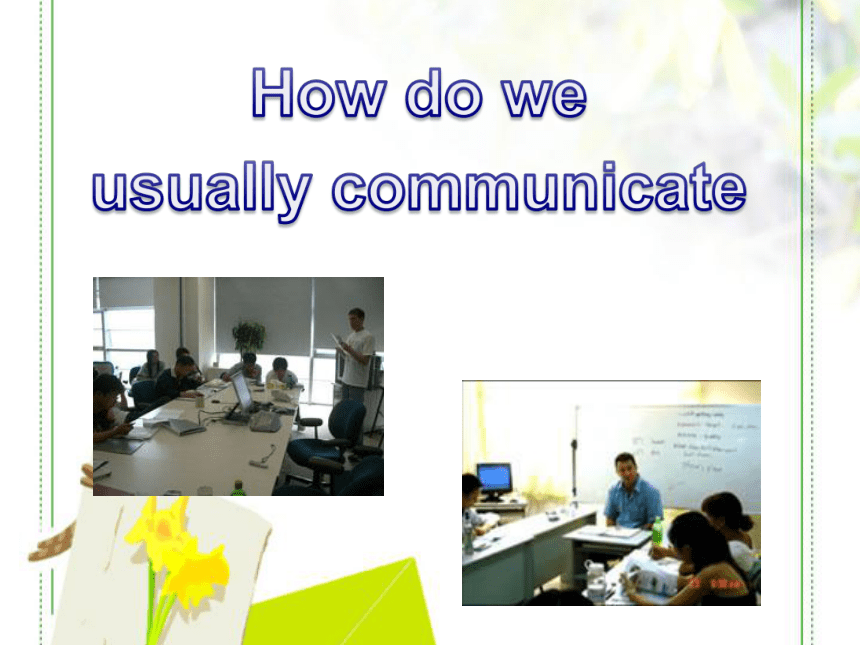
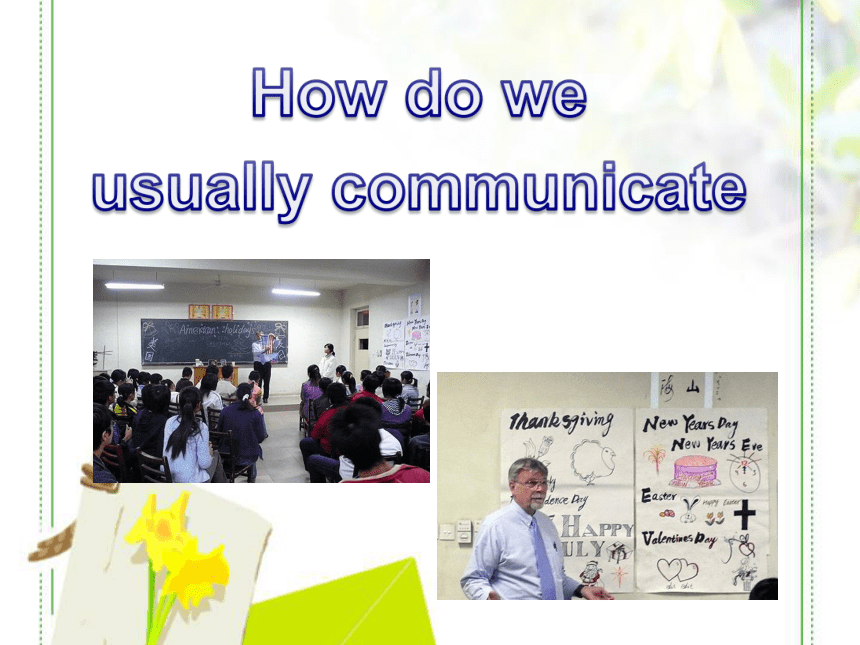

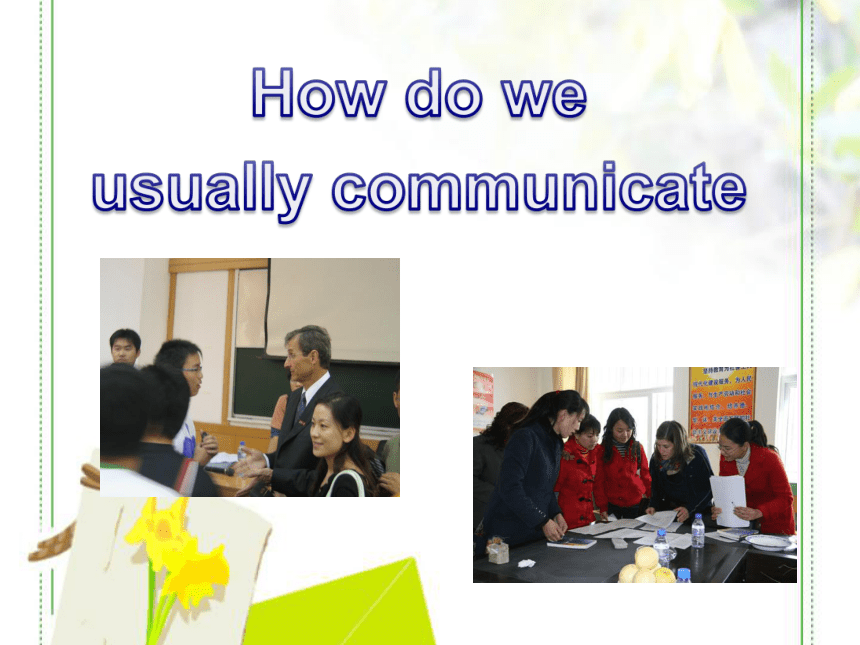
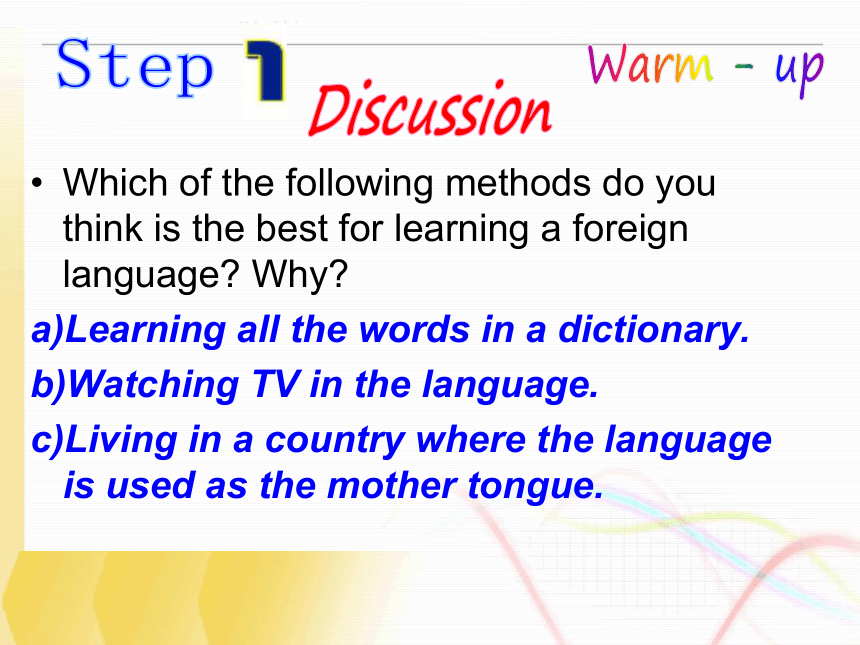
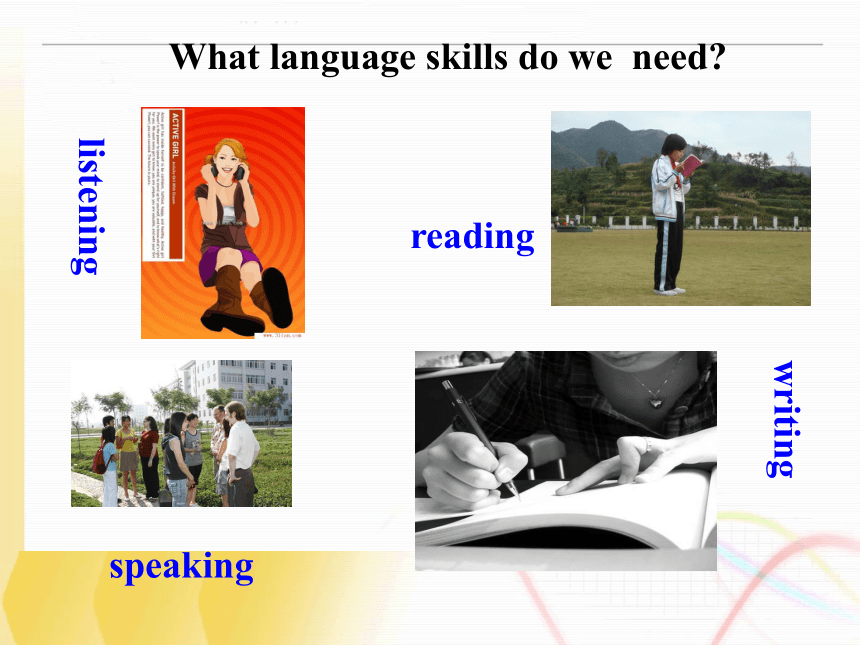
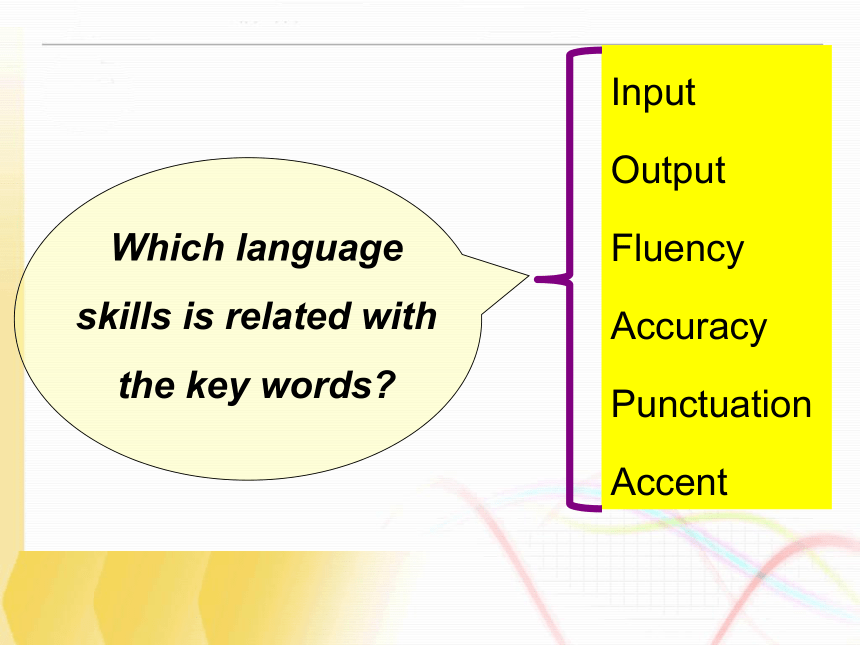

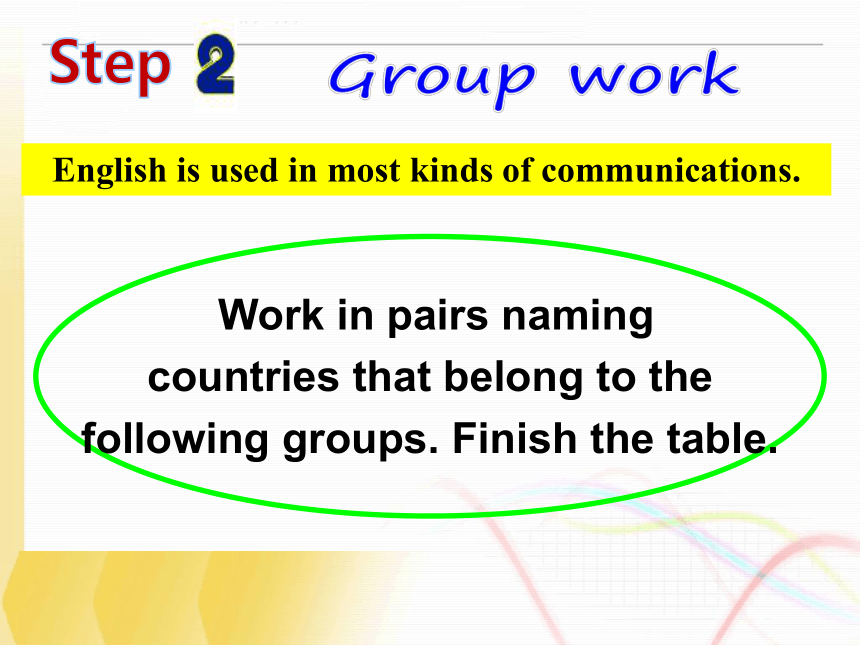
文档简介
课件31张PPT。How do we
usually communicateHow do we
usually communicateHow do we
usually communicateHow do we
usually communicateHow do we
usually communicateHow do we
usually communicateHow do we
usually communicateWhich of the following methods do you think is the best for learning a foreign language? Why?
Learning all the words in a dictionary.
Watching TV in the language.
Living in a country where the language is used as the mother tongue.Warm - upStepDiscussionlisteningWhat language skills do we need?speakingreadingwritingWhich language skills is related with the key words?Input
Output
Fluency
Accuracy
Punctuation
Accent Find the meaning of the key words in a dictionary. Match them to the language skills they are related with. Listening
Speaking
Reading
Writing Input
Output
Fluency
Accuracy
Punctuation
accentStepGroup work Work in pairs naming
countries that belong to the
following groups. Finish the table.English is used in most kinds of communications. First language or Mother language
指一个人从小就从父母或周围正常的社会环境中自然而然习得的并用于交际目的的语言,又被称为母语或本族语。
Second Language
指在母语以外,在官方、商业以及社会中广泛应用着的语言。
Foreign Language
指母语以外,只在学校里学习而在日常社会生活中很少有交际用途的语言。Canada, the USA, Britain,
Ireland, Australia.
New Zealand, South AfricaIndia, Kenya, Pakistan,
Sri Lanka Zimbabwe,
South Africa, Nigeria,
Singapore, PhilippinesSweden, the Netherlands,
ThailandStepListeningGo through the nationalities. Listen to six people talking. Identify the speakers’ accents.Speaker 1:BritishSpeaker 2:GermanSpeaker 3:AmericanSpeaker 4:ChineseSpeaker 5:AustralianSpeaker 6:FrenchStepPair work4Work in pairs. Discuss what messages the following body language communicates.Guess the meaning of the following pictures:Slap hands in the air fold arms across the chestKiss on both sides of the cheekPat on the back? Two people clap their hands together in the air.? A person pats another on the back.? A person kisses another person on both cheeks.? A person folds his arms across his chest.To encourage or congratulate each otherTo say that something is well doneTo greet or welcome peopleTo show irritation, disagreement or nervousnessConclusion Three kinds of language: first; second and foreign language
The meaning of some body movementsBody movementsBody movementsBody movementsBody movementsBody movementsBody languageto encourage or congratulate each otherto say that something is well doneto greet or welcome peopleto show irritation, disagreement or nervousness
usually communicateHow do we
usually communicateHow do we
usually communicateHow do we
usually communicateHow do we
usually communicateHow do we
usually communicateHow do we
usually communicateWhich of the following methods do you think is the best for learning a foreign language? Why?
Learning all the words in a dictionary.
Watching TV in the language.
Living in a country where the language is used as the mother tongue.Warm - upStepDiscussionlisteningWhat language skills do we need?speakingreadingwritingWhich language skills is related with the key words?Input
Output
Fluency
Accuracy
Punctuation
Accent Find the meaning of the key words in a dictionary. Match them to the language skills they are related with. Listening
Speaking
Reading
Writing Input
Output
Fluency
Accuracy
Punctuation
accentStepGroup work Work in pairs naming
countries that belong to the
following groups. Finish the table.English is used in most kinds of communications. First language or Mother language
指一个人从小就从父母或周围正常的社会环境中自然而然习得的并用于交际目的的语言,又被称为母语或本族语。
Second Language
指在母语以外,在官方、商业以及社会中广泛应用着的语言。
Foreign Language
指母语以外,只在学校里学习而在日常社会生活中很少有交际用途的语言。Canada, the USA, Britain,
Ireland, Australia.
New Zealand, South AfricaIndia, Kenya, Pakistan,
Sri Lanka Zimbabwe,
South Africa, Nigeria,
Singapore, PhilippinesSweden, the Netherlands,
ThailandStepListeningGo through the nationalities. Listen to six people talking. Identify the speakers’ accents.Speaker 1:BritishSpeaker 2:GermanSpeaker 3:AmericanSpeaker 4:ChineseSpeaker 5:AustralianSpeaker 6:FrenchStepPair work4Work in pairs. Discuss what messages the following body language communicates.Guess the meaning of the following pictures:Slap hands in the air fold arms across the chestKiss on both sides of the cheekPat on the back? Two people clap their hands together in the air.? A person pats another on the back.? A person kisses another person on both cheeks.? A person folds his arms across his chest.To encourage or congratulate each otherTo say that something is well doneTo greet or welcome peopleTo show irritation, disagreement or nervousnessConclusion Three kinds of language: first; second and foreign language
The meaning of some body movementsBody movementsBody movementsBody movementsBody movementsBody movementsBody languageto encourage or congratulate each otherto say that something is well doneto greet or welcome peopleto show irritation, disagreement or nervousness
